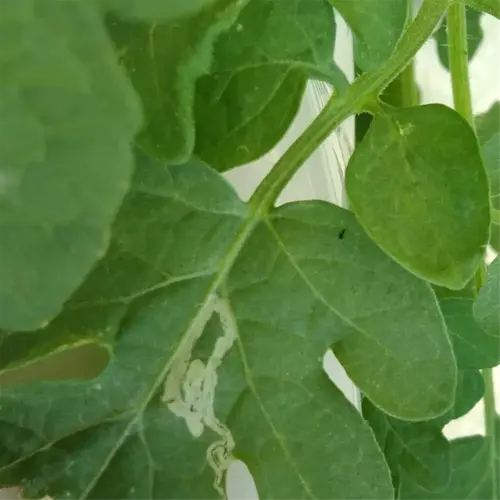When Plant Beans: Expert Timing for Every Garden

Written by
Julia Anderson
Reviewed by
Prof. Charles Hartman, Ph.D.When soil has reached 60°F, you can plant beans based on USDA zone time frames
In northern gardens, plant beans in mid-May to avoid frost. In southern zones, plant beans in March or April for double-cropping
Beans planted in soil with a pH of 6.0-7.0 and compost as a base will germinate faster
Beans need 1" of water each week when flowering and 0.75" of water when developing pods
Harvest bush beans at 50 days and pole beans at 60-90 days
DO NOT subscribe to any myth about planting beans based on the moon phase. Soil warmth is the only key to successful bean planting.
Article Navigation
Understanding when to plant beans will ultimately make the difference between a successful harvest and a less-than-desirable crop outcome. Beans are one of the easiest crops for beginners to grow. Unlike other, temperamental crops, such as tomatoes or peppers, beans can tolerate a less-than-perfect growing environment. I have worked with many first-time gardeners who find success with beans when they may have difficulties growing peppers or tomatoes.
Timing affects more than the rate of growth. If you plant too early, cool soil can suppress the germination process. If you plant too late, the hot summer weather may stress seedlings. My neighbor missed the perfect two-week opportunity to plant and lost an entire crop due to bean beetles.
Where you live determines your specific planting dates much more than the date on a calendar. Gardeners in the North usually wait until mid-May while those in the South might plant in mid-March. I discovered this the hard way after moving from Georgia to Vermont many years ago.
Disregard all the old stories about the phases of the moon determining which days to plant. Soil temperature is much more important. Use any inexpensive thermometer. If the thermometer reads 60 degrees Fahrenheit, at a depth of 4 inches, for three days in a row you can rest assured that your beans will do well. I have been using this method for ten years.
Optimal Planting Times
When planting beans, sow temperature beats calendar dates every single time. I've seen beans struggle to germinate in chilly April and then flourish in warm May. Seek to plant in soil with a temperature of 60°F for three consecutive days. A simple, inexpensive thermometer sourced from a garden center would do a much better job than guessing.
Frost will kill bean seedlings. Gardeners in cold climates should plant approximately two weeks after the last frost. In warm regions, avoid planting during the hottest time of summer. I learned this lesson the hard way in Zone 5, having lost a crop by planting too early. Now I recommend waiting until nighttime temperatures stay consistently above 50°F.
Utilizing succession planting can extend your overall harvest. For bush beans, plant them every 14 days to have an ongoing harvest. For pole beans, you only need to plant them one time. During the previous growing season, I planted bush beans in succession six times from May until July. We enjoyed fresh beans until the first frost in October without being overwhelmed with excess beans.
Your USDA zone will determine when to plant. If you're in USDA zones 3-4 you plant in June. If you are USDA zones 5-7 you can plant in May. USDA zones 8-10 allow you to plant beans as early as March. A friend in zone 9b even grows his beans through the winter! Be familiar with your zone map, and take into account microclimates (urban heat islands).
Bean Varieties Simplified
While bush beans and pole beans address similar gardening problems, they serve different purposes. Bush beans have a compact habit of growth, meaning you only need 12 inches between plants. Pole beans grow on trellises, eliminating any ground space they take up. I can fit six pole bean plants in my urban garden, but only two bush bean plants would grow, as they need more space. In garden scenarios where space is limited, vertical growth can triple your yield.
Lima beans require warm nighttime temperatures, above 55 degrees Fahrenheit, which makes them especially suitable for Southern Zones. Soybeans can germinate in cooler spring temperatures, but they need 90 days of frost-free growing time. When a Minnesota gardener had three unsuccessful growing seasons, I helped him switch from limas to soybeans in a raised bed. In the first season, he filled two shelves of his freezer.
Bush-type varieties, such as Contender or Blue Lake, are excellent choices for new gardeners because they typically grow relatively quickly, are disease tolerant, and can handle less-than-perfect watering conditions. My niece's first garden featured Contender beans. She was able to harvest about 5 pounds of beans from a 4-foot square bed even after forgetting to water the plants on two different occasions!
Dry beans may test your patience but reward it, too. They require more than 100 days and dry autumn weather to mature. I grow Black Turtle beans in zone 6. I plant them in early June for a harvest in September. Last year, I harvested enough beans to fill 12-quart jars for winter chili.
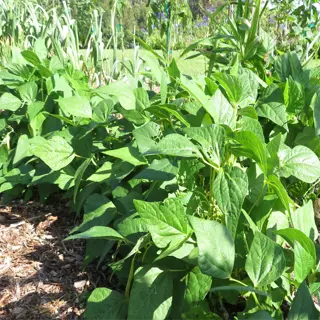
Bush Beans
- Growth habit: Compact, determinate (12-24 inches tall)
- Yield: 5-7 lbs per 10-ft row
- Best for: Small gardens, quick harvests (50-60 days)
- Top varieties: Contender (cold-hardy), Blue Lake (disease-resistant)
- Climate: Thrives in Zones 3-9 with 6+ hours of sun
- Tip: Plant in blocks for wind resistance

Pole Beans
- Growth habit: Vining, indeterminate (6-10 feet tall)
- Yield: 8-12 lbs per 10-ft row
- Best for: Vertical spaces, continuous harvests
- Top varieties: Kentucky Wonder (heat-tolerant), Scarlet Runner (ornamental)
- Climate: Ideal for Zones 4-10 with warm summers
- Tip: Use 8-ft bamboo stakes for support
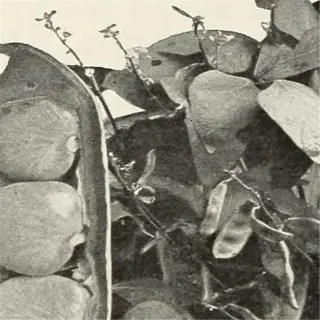
Lima Beans
- Growth habit: Bush or pole (2-12 feet)
- Yield: 4-6 lbs per 10-ft row
- Best for: Long, hot growing seasons (70-85 days)
- Top varieties: Henderson (dwarf), King of the Garden (large-seeded)
- Climate: Requires Zones 7-11 or greenhouse starts in cooler areas
- Tip: Soak seeds overnight for faster germination
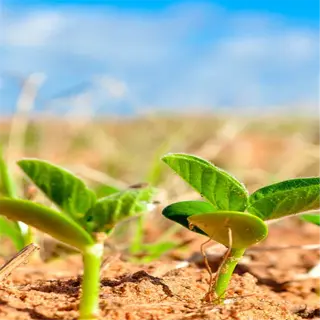
Soybeans
- Growth habit: Bushy, 2-3 feet tall
- Yield: 2-4 lbs (shelled) per 10-ft row
- Best for: Nutrient-dense edamame or drying
- Top varieties: Envy (early), Butterbean (large pods)
- Climate: Zones 5-9 with consistent moisture
- Tip: Harvest pods when plump but still green
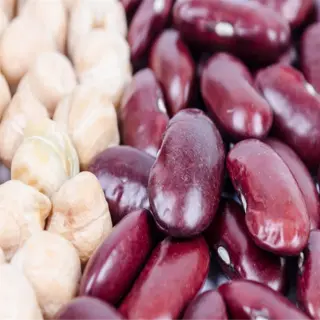
Dry Beans
- Growth habit: Bush or semi-vining (2-4 feet)
- Yield: 3-5 lbs (dried) per 10-ft row
- Best for: Storage (90-100 days to maturity)
- Top varieties: Pinto (drought-tolerant), Black Turtle (versatile)
- Climate: Zones 4-10 with low humidity during drying
- Tip: Let pods dry fully on plants before harvest
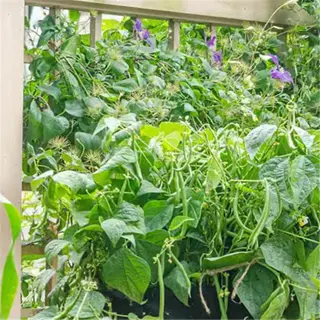
Container Beans
- Growth habit: Compact bush types (18-24 inches)
- Yield: 4-5 lbs per 5-gallon container
- Best for: Balconies, patios, small spaces
- Top varieties: Patio Pride (dwarf), Mascotte (slim pods)
- Climate: Adaptable to Zones 3-10 with drainage
- Tip: Use fabric pots for better root aeration
Soil and Planting Essentials
Soil pH 6.0-7.0 allows beans to access nutrients that are important to them. I tested a client's soil for a problem of stunted bean plants with a pH of 5.2. After adding lime, the pH was 6.5, and her yield doubled. Purchase a $15 kit that tests pH, and the soil each month in the preparation season.
Clay soil requires assistance. To improve drainage in clay soil, work in 3 inches of coarse sand into the top 8 inches of soil. Have sandy soil? You need to add 2 inches of compost to help with moisture retention. A nearby friend had a clay garden that was like a swamp, and this simple fix turned productive.
Apply aged compost at a rate of 1 inch per 100 sq ft before planting. I learned the hard way that fresh manure will burn roots and kill seedlings... after losing some seedlings years ago. Mix the fresh manure into the top 2-3 inches of topsoil about four weeks before planting for faster seedling emergence.
When we over-fertilize, we may cause more harm than good. Beans generate their nitrogen. If there is excess fertilizer, leafy plants are the result with pods few and far between. Only use a half-strength organic fertilizer if your soil test says it is poor. Last season, for example, my neighbor's beans came out to 80% leaves due to overfeeding. A soil test saved this year's crop.
Test Soil pH
- Tools: Digital pH meter or test kit ($15-$30)
- Ideal range: 6.0-7.0 for beans
- Amendment: Add lime (raise pH) or sulfur (lower pH) per test results
- Timing: Test 4 weeks before planting
Improve Drainage
- Clay soil: Mix 2-3 inches of coarse sand
- Sandy soil: Add 3 inches of compost
- Raised beds: Minimum 12-inch height
- Slope: 2% grade for runoff management
Add Organic Matter
- Compost: 1 inch per 100 sq ft
- Aged manure: 0.5 inch (avoid fresh)
- Leaf mold: 2 inches for moisture retention
- Timing: Mix into top 8 inches of soil
Mulching Techniques
- Materials: Straw, wood chips, or grass clippings
- Depth: 2-3 inches around plants
- Benefits: Weed suppression, moisture retention
- Timing: Apply after soil warms in spring
Soil Testing Timing
- Frequency: Test annually for nutrient balance
- Best seasons: Early spring or fall
- Tools: Digital meters provide instant results
- Amendment lead time: 3-4 weeks before planting
Watering and Nutrient Tips
Once the beans have germinated, begin watering modestly, as in misting them daily, keeping the soil damp, but not soggy. At full size, beans can handle about 1 inch of water per week, which could be shared between two watering sessions. I did drown a crop once by thoroughly soaking the seedlings. The roots were rotten in a couple of days.
When we overwater, it can cause root rot, particularly in clay soils. Conduct a knuckle test: stick your finger in the soil into the first knuckle, if any soil is stuck to your finger when you take it out, wait. A neighbor's bean patch, which was watered every day with the hose, turned yellow last July. In general, allow the soil to dry slightly between watering.
To develop strong roots, seedlings should be given a 5-10-5 fertilizer. Once plants start flowering, I switch to 10-10-10 fertilizer. Organic growers continue to rave about fish emulsion at half the recommended strength. I had my best yield when I brewed compost tea with worm castings every three weeks.
If you can help it, you should shy away from synthetic NPK blends. Instead, use alfalfa meal for an organic source of nitrogen that won't burn your plants. I like crushed eggshells for calcium for stronger pods. Since 2018, I've been using kelp meal for potassium. Beans grown organic resist disease better than beans grown with synthetic, chemical methods.
Germination Phase
- Frequency: Light misting daily to keep soil moist
- Depth: 0.5 inches of water penetration
- Tools: Spray bottle or drip irrigation
- Avoid: Waterlogged soil causing seed rot
Flowering Phase
- Frequency: 1 inch weekly (split into 2 sessions)
- Depth: 6-8 inches for deep root hydration
- Tools: Soaker hoses for even distribution
- Avoid: Wet foliage to prevent fungal diseases
Pod Development
- Frequency: Reduce to 0.75 inches weekly
- Depth: 4-6 inches to concentrate sugars
- Tools: Watering cans for targeted irrigation
- Avoid: Drought stress causing hollow pods
Drought Adaptation
- Strategy: Mulch with 3 inches of straw
- Watering: Deep soak every 10-14 days
- Varieties: Choose drought-tolerant types like Pinto
- Timing: Water at dawn to reduce evaporation
Container Watering
- Frequency: Daily in hot weather
- Drainage: Use pots with 3+ drainage holes
- Soil: Mix perlite for better moisture control
- Tools: Self-watering containers for consistency
Harvesting and Storage
Harvest beans when pods are firm to the touch, with visible seed bumps just beneath the surface. For snap beans, pick before the pods turn yellow. One time I didn't and they turned to rope overnight. During peak season it is best to check plants each day. Generally, a shiny surface on the pod is a good indication that the time is right.
To store fresh beans, refrigerate at 40 degrees for 3 to 5 days. Freezing fresh beans will increase their storage time to about 10 months but will need blanching. A client of mine lost 20 pounds of beans because they tried to freeze them without blanching. Beans cooled in ice water after boiling will keep their color and crunch better than cooling in air.
Submerge the beans in boiling water for three minutes to stop the action of enzymes that can decay the beans. Use one gallon of water per pound of beans. The unblanched frozen beans that my neighbor gave me turned mushy once permeated the soups. Ensure that the beans have dried thoroughly, and allow them to rest on towels for about 30 minutes frozen beans can clump together into a ball of ice.
Do not wash beans before storing them as moisture can lead to undesirable mold growth. It is preferable to brush off excess dirt. I learned the hard way by ruining an entire harvest after storing beans in damp containers. Beans can be dried for storage long-term by hanging the pods in the shade with good ventilation for 2 to 3 weeks until they rattle.
Fresh Harvest Timing
- Bush beans: 50-60 days after planting
- Pole beans: 60-90 days after planting
- Visual cues: Plump pods, crisp texture
- Avoid: Overmature pods with visible seeds
Drying Techniques
- Air-drying: Hang whole plants in ventilated area for 2-3 weeks
- Dehydrator: 125°F (52°C) for 8-12 hours
- Storage: Airtight jars with oxygen absorbers
- Test: Dried beans shatter when hit with a hammer
Freezing Process
- Blanching: 3 minutes in boiling water
- Cooling: Ice bath for 1 minute
- Packaging: Vacuum-sealed bags
- Shelf life: 10-12 months at 0°F (-18°C)
Canning Guidelines
- Pressure canner: 11 PSI for 25 minutes
- Jar size: Quart jars for family portions
- Brining: 1 tsp salt per quart
- Safety: Discard bulging lids immediately
Root Cellar Storage
- Conditions: 32-40°F (0-4°C), 60-70% humidity
- Containers: Perforated plastic bins
- Duration: 2-3 months for fresh beans
- Monitor: Check weekly for mold
5 Common Myths
Beans grow best when planted during the waxing moon.
Beans germinate according to soil temperature (minimum 60°F/15°C), not lunar cycles. The moon phases have no regard in yield difference when grown by lunar phases or only by soil temperature.
Every variety of beans fix nitrogen naturally in soil.
Only inoculated beans with Rhizobia bacteria fix nitrogen. Most commercially available seed do not come pre-inoculated so gardeners must take the step of applying the bacterial powder to the seeds prior to planting.
Pole beans always produce higher yields than bush beans.
Bush beans yield 5-7 lbs/10-ft row in 50 days, while pole beans need 60+ days for 8-12 lbs. Yield depends on season length, not growth habit.
Planting beans deeper prevents pest damage.
Beans planted deeper than 1 inch often rot. Prevent pests with row covers (for beetles) or diatomaceous earth (for slugs), not incorrect planting depth.
Beans can't grow in partial shade.
Bush beans tolerate 4-6 hours of sun. In hot climates (Zones 8-10), afternoon shade prevents blossom drop and increases yields by 15-20%.
Conclusion
Mastering when to plant beans will determine how successful your harvest will be. You have to think about the proper time to plant based on soil temperature, not by calendar date. For northern gardeners, this means waiting until around the end of May. For southern gardeners, you will be planting in early March. Once I rushed to plant because of a warm week in April, and I ended up losing my seedlings to an unexpected frost. Be patient.
Alternate beans every year with corn or squash. Beans are nitrogen-fixing legumes but need to be followed by heavy feeders. I had a three-year rotation system and realized a 30% increase in yield on clay soil. Do not plant beans or beans-related crops after onions because, while their residues are slow to decompose, they will impede nitrogen fixation for several years.
It's important to assess the soil moisture level before watering. Soil that is too wet is conducive to bean beetles and various fungal diseases. You can assess the soil moisture content using a simple soil moisture sensor or finger test. One of my clients managed to cut pest damage by 50% by simply allowing the soil to dry to the first knuckle before watering again.
Organic farming supports soil resilience. Compost increases microbial activity, whilst cover crops help to reduce erosion. My quick, go-to mix is aged manure and leaf mold. Remind all you want about the different planting windows based on your zones; I like to remind people that zone 5 is mid-May, and zone 9 is the advantage of February. Healthy soil holds and nurtures bean plants that thrive.
External Sources
Frequently Asked Questions
When is the best time to plant beans?
Plant beans when soil temperatures reach 60°F (15°C). Northern gardens should wait until mid-May to avoid frost, while Southern zones can plant as early as March. Use USDA zone maps to confirm local timing.
How do I know if it's safe to plant beans now?
Check your last frost date and soil temperature. If frost risk has passed and soil is consistently above 60°F, proceed. For late plantings, choose fast-maturing bush varieties to ensure harvest before fall frost.
What plants should never grow near beans?
Avoid planting beans near:
- Onions/garlic (they inhibit nitrogen-fixing bacteria)
- Fennel (releases growth-stunting compounds)
- Sunflowers (compete aggressively for nutrients)
Do beans need pre-soaking before planting?
Soaking speeds germination but isn't mandatory. Lima beans benefit most from 8-12 hour soaks. Avoid soaking bush/pole beans in cool soil, as it increases rot risk. Always use untreated water.
What's the difference between bush and pole beans?
Key differences:
- Bush beans: Compact, 12-24" tall, harvest in 50-60 days
- Pole beans: Vining, 6-10' tall, produce longer (60-90 days) but higher yields
- Space needs: Bush for small gardens, pole for vertical spaces
Can I plant beans near tomatoes?
Yes - beans and tomatoes share mutual benefits. Beans fix nitrogen in soil, while tomatoes deter bean beetles. Keep 18-24" apart to prevent root competition and ensure both get full sun.
Is June too late to plant green beans?
In zones 3-6, June is ideal for bush beans (50-day maturity). Southern zones (7-10) can plant pole beans until July. Calculate backward from your first fall frost date minus 60 days.
Do bean plants regrow yearly?
Beans are annuals - they complete their lifecycle in one season. You must replant yearly. Scarlet runner beans may self-seed mildly in zones 8-11 but aren't true perennials.
What's the ideal soil temperature for beans?
Beans germinate best at 60-85°F. Below 50°F, seeds rot. Use a soil thermometer: measure 4" depth at 10 AM for 3 consecutive days. Black plastic mulch can warm soil 5-10°F faster.
How many bean seeds should I plant per hole?
Plant 2-3 seeds per hole, then thin to the strongest seedling. Space bush beans 3-4" apart, pole beans 6-8". Overcrowding reduces yields and increases disease risk.
